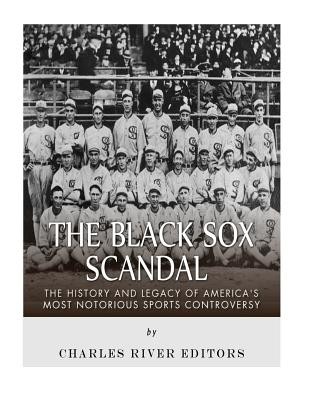
- Išsiųsime per 10–14 d.d.
- Autorius: Charles River Editors
- Leidėjas: CreateSpace Independent Publishing Platform
- Metai: 2018
- ISBN-10: 1985027232
- ISBN-13: 9781985027237
- Formatas: 21.6 x 27.9 x 0.5 cm, minkšti viršeliai
- Kalba: Anglų
- Extra -15 % nuolaida šiai knygai su kodu: ENG15
Atsiliepimai
Aprašymas
*Includes pictures *Includes accounts of the scandal written by Sox players, newspapers, and more *Includes online resources and a bibliography for further reading *Includes a table of contents "As Jackson departed from the Grand Jury room, a small boy clutched at his sleeve and tagged along after him. 'Say it ain't so, Joe, ' he pleaded. 'Say it ain't so.' 'Yes kid, I'm afraid it is, ' Jackson replied. 'Well, I never would've thought it, ' the boy said." - The Chicago Herald and Examiner, September 30, 1920 The 1919 World Series was one that baseball fans would never forget, but the memories are hardly fond. The Chicago White Sox were favored 5:1 to beat the Cincinnati Reds, and for the first time since 1903, the Series would be a best-of-nine format. However, at a time when players were treated as second class, some sought a payday beyond what they made in the leagues, and the White Sox players were some of the most poorly paid in the league. The owner of the team, Charles A. Comiskey, was one of the cheapest owners in the game, too cheap to pay to have the team's uniforms laundered after games. Around two weeks before the World Series was set to begin, Chicago first baseman Chick Gandil met with a gambler in his Boston hotel room. During that meeting, Gandil told Joseph Sullivan that for $100,000, he and other members of the White Sox were willing to take a dive and make sure that the Reds won the World Series. Gandil was able to convince the team's top two pitchers to go along with the plan, as well as five other players, and gamblers came up with the money, including the famous New York City mobster Arnold Rothstein. With that, the plan to throw the World Series was put in motion, and rumors began to spread around the country prior to the start of the series as gamblers wagered large sums of money on the Reds. The Sox lost Game 1 by a score of 9-1, but even after the gamblers refused to pay the players after the first game, the players faithfully took a dive again the next day, losing 4-2. Gandil now demanded $40,000 from the gamblers, payment for losing two games, but when he only received $10,000, the players revolted, winning the third game 3-0. Once the gamblers came up with money, the White Sox lost the next two games by scores of 2-0 and 5-0. It seemed that the series was over, but when $20,000 promised to the players was not received, the players decided they would abandon the plan to lose. Chicago won the Game 6 and Game 7 against Cincinnati, but Rothstein, who had bet on the series and now felt the need to secure his investment, sent a thug to threaten Lefty Williams, the White Sox player scheduled to pitch the 8th game. The thug threatened that if Williams was still on the mound after the first inning something would happen to him and to his wife. Fearing bodily injury, or worse, Lefty gave up three runs in the first inning, and though the White Sox manager pulled him from the game, the damage was already done. Chicago was unable to come back, and the Reds took the series in the 8th game by a score of 10-5. The press had a field day, calling for justice in a series that was clearly fixed, and 8 players would be charged: Eddie Cicotte, Oscar "Happy" Felsch, Arnold "Chick" Gandil, "Shoeless" Joe Jackson, Fred McMullin, Charles "Swede" Risberg, George "Buck" Weaver, and Claude "Lefty" Williams. Though they were all acquitted in court, the players were banned from baseball for life, and the Black Sox Scandal has continued to be well-known nearly a century later, and it has given rise to all sorts of legends. Ironically, Shoeless Joe Jackson is the most famous Black Sox player even as historians continue to debate whether he was actually in on the fix, and one part of the story many remember is the apocryphal anecdote that has him admitting his guilt to a disappointed young fan in the courtroom.EXTRA 15 % nuolaida su kodu: ENG15
Akcija baigiasi už 3d.07:36:32
Nuolaidos kodas galioja perkant nuo 10 €. Nuolaidos nesumuojamos.

- Autorius: Charles River Editors
- Leidėjas: CreateSpace Independent Publishing Platform
- Metai: 2018
- ISBN-10: 1985027232
- ISBN-13: 9781985027237
- Formatas: 21.6 x 27.9 x 0.5 cm, minkšti viršeliai
- Kalba: Anglų




Atsiliepimai